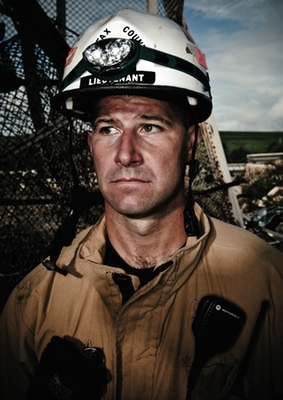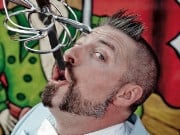
As told to Cindy Rich
I was home from the fire station the day the earthquake happened in January 2010. I started getting reports on my cell phone of a 7.0 in Haiti. I knew right off that we’d be going.
We were there less than 12 hours before we did our first rescue. We were getting ready to do one more sweep of a building when we heard a woman moan. All we could see were the tips of her fingers. She had only about an inch between her and the floor slab above, which had pancaked down on her. She was completely entombed.
We were told there were about 500 people in this school at the time of the quake—their school system has everyone from grade school to college in one building. We worked on this one particular woman for more than 24 hours. She was about 27. There were bodies all around her. She was lying on top of one.
We had to go about 35 to 40 feet, tunneling around six bodies to get to her. We just chipped away, lifting the concrete. One of the rescue specialists lay on his back and shoved a hydraulic tool in as far as he could, then we used our search cam to help tell him where to go.
I talked to her all night. One of the local fire-department volunteers—his name was Fred—was my translator. I remember the woman saying she was studying English, and something about where she lived in Haiti. I was telling her she needed to hang in there.
A couple times she faded away, and I thought we had lost her. We needed to get fluids in her—she was 3½ days into the quake at that point—so we hung a couple of our medics upside down on a rope and hooked up a gantry to see if they could put an IV in her. But she was so dehydrated that the veins in her hand were too flat.
When we finally started moving the slabs on top of her, the medics got an IV in her neck. When she perked up, she felt more of the pain and couldn’t tolerate it. Our trauma doctors sedated her as many times as they could. When we were getting close, one of them looked at me and said, “This is my last sedation—you have got to make something happen right here.”
We’d turned the outside canopy next to the school into a makeshift trauma bay, and we had a line of people there to get the woman down safely and onto a metal table. Once they got her stabilized, I helped load her into an Air Force Hummer. She ended up losing her leg.
We all shared a feeling of relief when it was over. A sense of pride and camaraderie. We saw it all fall into place, like we trained for. She was one of 16 rescues our team made. The hardest pill to swallow was the buildings we didn’t get to, or the ones we got to too late. You feel like “If only I had known.”
Rodney Vaughan is a lieutenant at Fire Station 418 in Fairfax County and a member of the 200-person Virginia Task Force 1, one of two such teams in the country certified to respond to international disasters under the direction of the US Agency for International Development.
This article appears in the November 2011 issue of The Washingtonian.

















